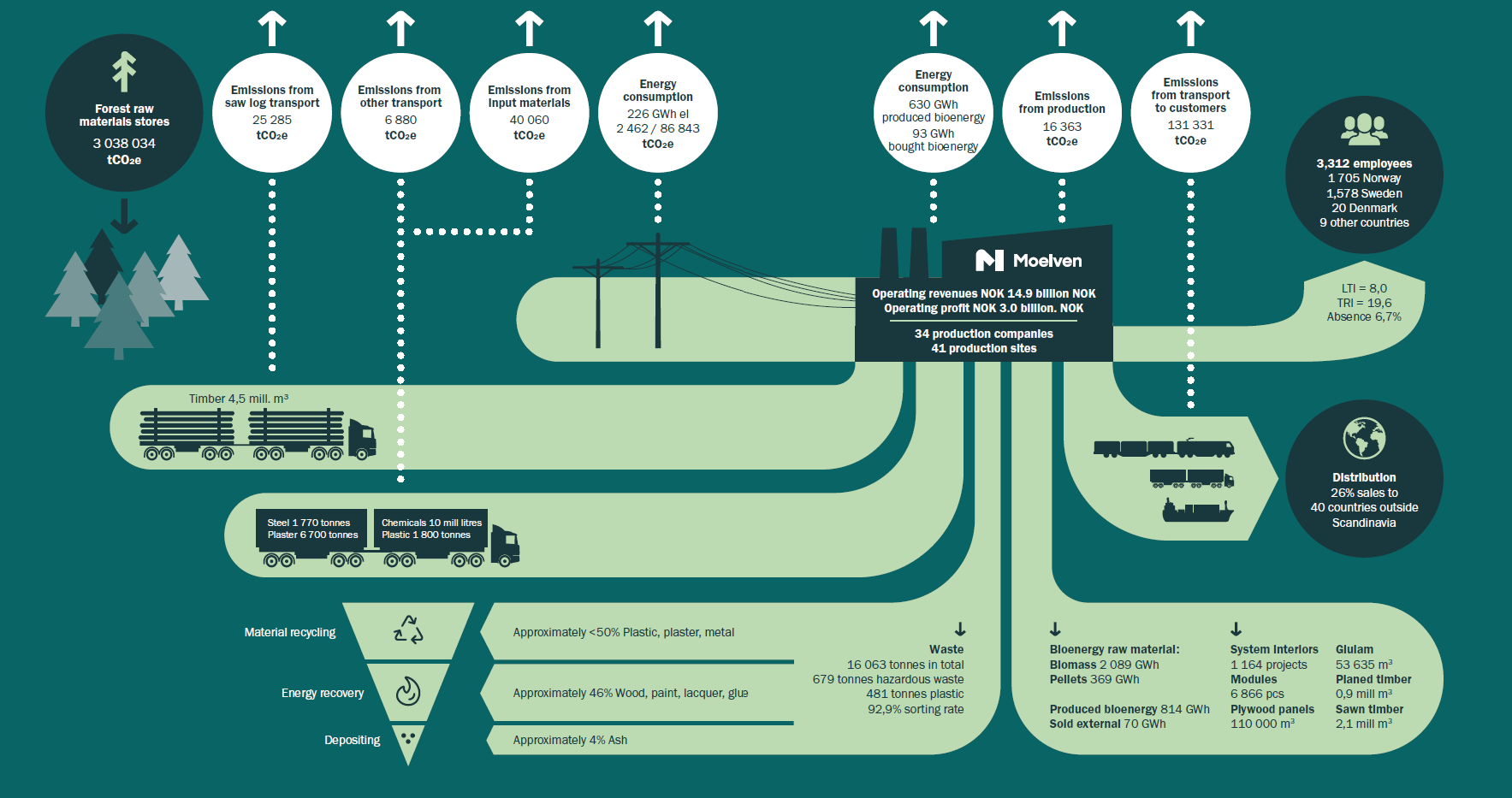Sustainability
Moelven has a long history, and the company can look back on more than 120 years of operation. The basic idea has nevertheless always been the same: to use natural resources from the forest to the fullest.
Moelven has a long history, and the company can look back on more than 120 years of operation. The basic idea has nevertheless always been the same: to use natural resources from the forest to the fullest.
Moelven's sustainability work is prioritised according to the kind of significance it has for both the outside world and ourselves, as well as emphasising where we can make the biggest difference.
Most of our business is based on a naturally renewable raw material, which is also nature's own solution for carbon capture and storage, namely wood.
The most important point in our sustainability strategy is therefore to work to refine the raw material with as little climate footprint as possible, and to work to ensure that as large a proportion as possible of our finished goods becomes part of lasting buildings and constructions so that they can continue to sequester carbon as long as possible.
We are Moelven, you make the difference! This is how our personnel concept reads. It is particularly apt when we talk about sustainability.
The basis for our selection of investment areas is analyzes based on the Global Reporting Initiative's guidelines. The main investment areas have been chosen on the basis of what is essential for long-term value creation, as well as how we influence and are influenced by our stakeholders.
It includes an assessment of the environmental and social impact through the value chain, market changes, as well as stakeholder expectations now and in the future. It is also considered where Moelven as a company has the greatest positive and negative impact on the outside world, while also highlighting the areas where we have the greatest possible impact.

What we define as sustainable development is development that meets today's needs without jeopardising future generations' opportunities to satisfy their needs. This could mean, for example, that we do not cut down more trees than we plant, so that future generations' ability to build with wood is as good as ours.

The starting point for all of Moelven's sustainability work is the UN's sustainability goals. To ensure that our internal goals contribute to a sustainable future in a global perspective, we have chosen to focus on the five goals that we believe have the greatest effect. It is life on land, stopping climate change, good health, good education and decent work and economic growth.

Moelven continually works to reduce CO2 emissions, make energy use more efficient in production, and optimise the use of raw materials. The greater the proportion of our production that becomes products used in durable buildings and constructions, the more CO2 we help keep out of the atmosphere.

To ensure that our operations contribute to preserving natural resources, we must ensure that we use renewable resources and make full use of them. Taking care of natural resources also means taking biological diversity into account. We do this by ensuring certification and quality assurance of the supply chain all the way from the forest to the market. Through the documentation work that the certifications require and the reporting of environmental data, we ensure that we can prioritise our efforts and focus on the right areas. We want our customers and the public to know what buying and using products and services from Moelven means for the climate and the environment. In addition to optimising production with regard to efficiency and raw material utilisation, residual materials and waste must also be sorted and handled in such a way as to facilitate reuse and recycling.

Our employees are Moelven's most important resource. We aim to be an attractive and safe workplace, and ensure that our operations and our products do not harm either people, biological diversity or any ecosystem.

We will contribute to local value creation. We do this by supporting the green transition with our societal contribution through paid taxes and fees, as well as the ripple effects created in local communities by using local subcontractors.